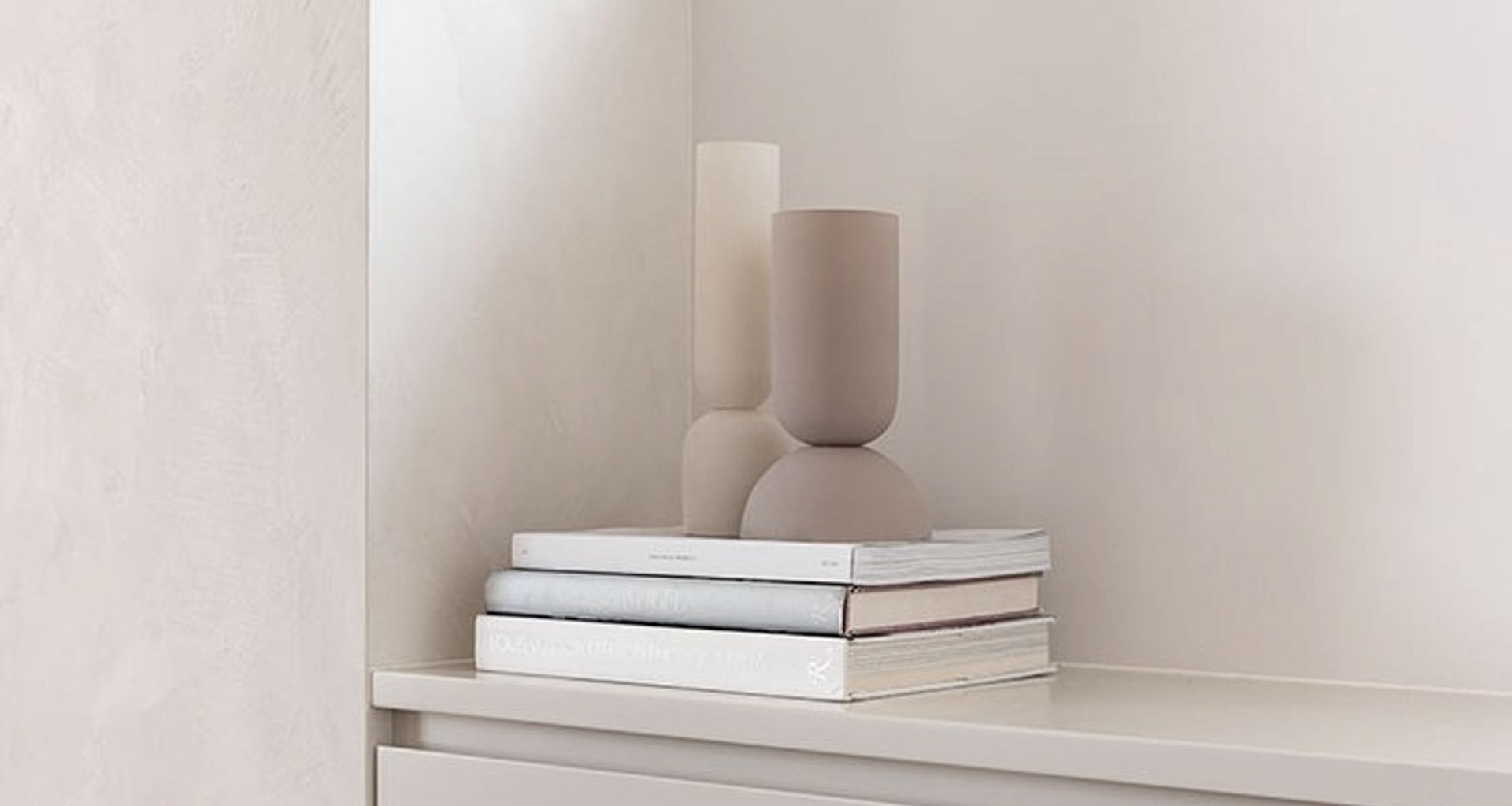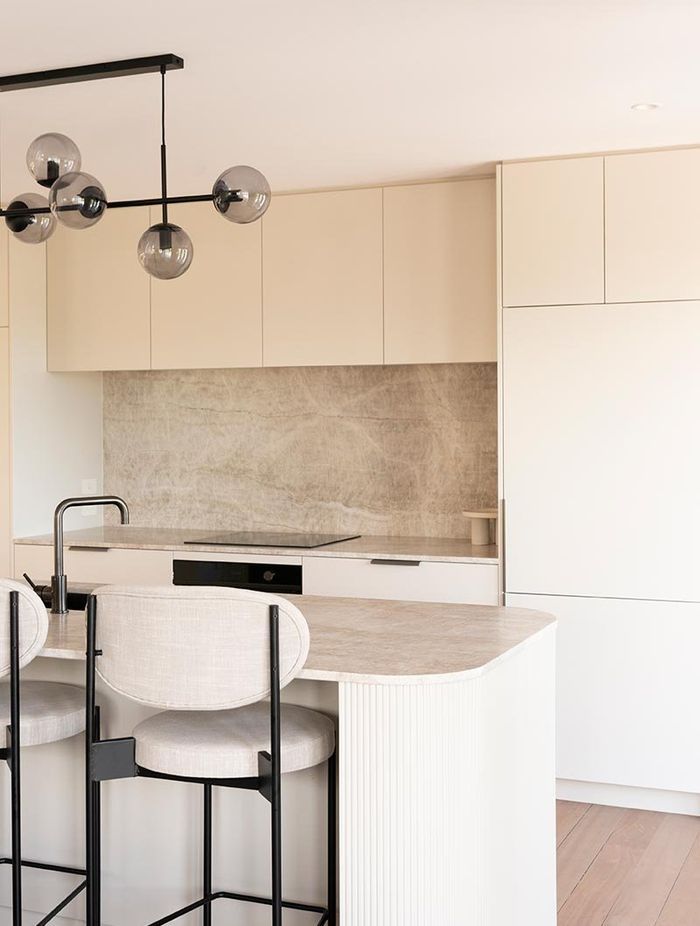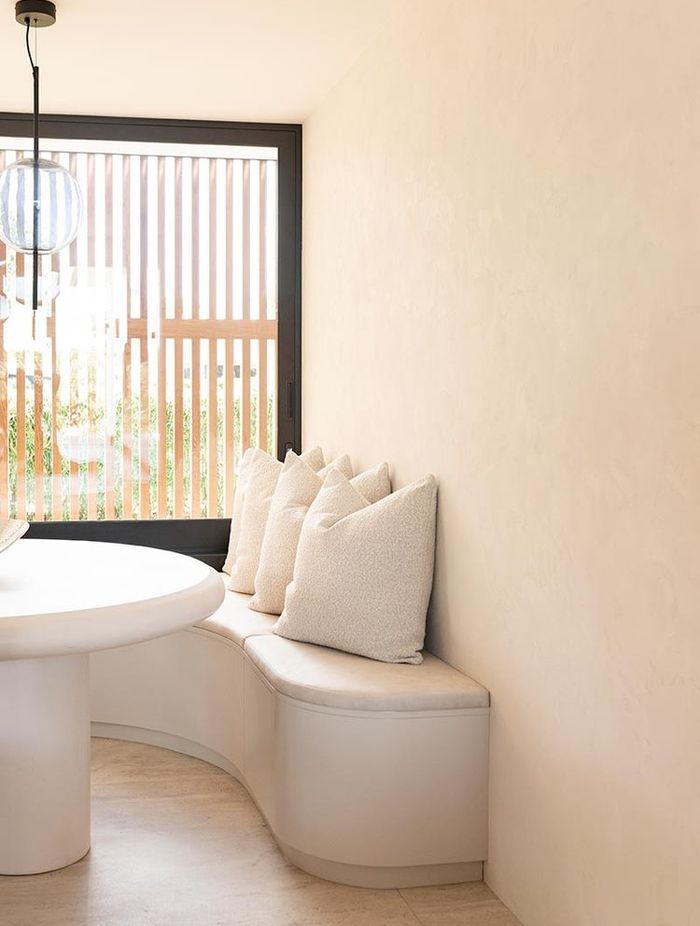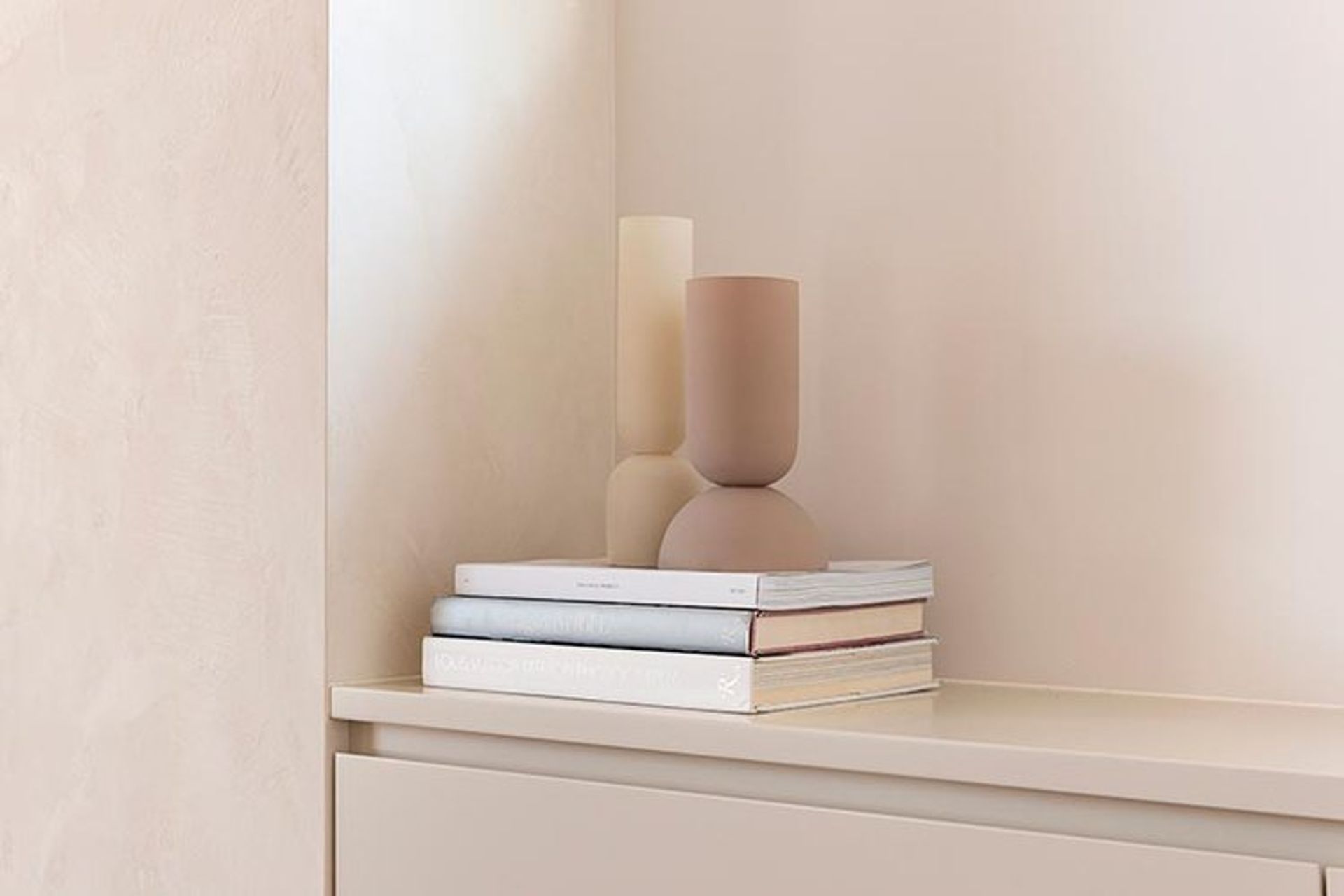7 Ways To Use Curves

Kitchen cabinetry
Fluting is shallow scallop-shape detail used in interiors to add texture and interest in a natural way (often inspired by the architecture of ancient cities like Rome). Stone or timber can be fluted using a special router tool attached to a CNC machine, adding beautiful detail to built-in elements like cabinetry or benchtops. The process of fluting stone is very expensive, and in this case I was tasked with finding a more cost-savvy solution. The cabinetmaker and I decided on fluted MDF panels that had been cut into a slimmer profile so they could be curved to match the benchtop shape. The panels were then sent to the paintshop and sprayed in a Resene Blanc lacquer finish.


Stone
Adding a subtle curve to stone creates an inviting look, and is also practical to manouvre your body past and around. Achieving this shape will incur slightly more cost than a standard corner, as it’s more work for your fabricator (stone cutter) to plan and achieve the perfect curve. But if you keep the stone it’s standard height (usually 20mm or 30mm) adding a curve will be far cheaper than creating a thicker benchtop out of mitred pieces). I like to use curved stone on kitchen and bathroom vanities where it suits the design, and also on fireplace hearths and furniture pieces like coffee and side tables.
Vanities
If everything else in a room features straight lines, introducing a curve can soften the look. In this bathroom I choose to add a curve on the vanity which also helps to open the thoroughfare available in a smaller room. The curve is repeated on the mirror and the top of the glass as subtle repetition, but everything else is straight to ensure the room still has a modern aesthetic. The curve radius is the same as that on the kitchen bench so there is continuity between the spaces.

Mirror
The spare room in this home double duties as an office and studio and was a space the owners were keen to save money on (especially at the end of a renovation!). To add impact to the neutral space we installed an oversized circular mirror to create interesting reflections and make the space appear larger. The mirror was cut by the mirror and glass supplier used for the bathrooms – they can’t make frames but I like the minimal profile and also the $200 cost by keeping it simple!


Furniture
Curved furniture is friendly, inviting and makes you feel like you’re being cuddled. Sign me up! This room featured lots of linear details like timber plank flooring, a fireplace surround finished with Ambitec plaster, built-in cabinetry and floor to ceiling curtains. This large orb-like living room chair was the perfect piece to soften the space, both figuratively and literally.
Cabinetry
Whether you have a character home or modern home, rounding off the edge of cabinetry into a curve shape can help to add elegance within the interior. In a character home you could finish it with more traditional skirting and panelling, but in this modern home we chose to keep it simple. When designing this new dining area the client wanted seating options for entertainment but also needed additional storage. Our solution was a built-in benchseat that runs along one entire wall and part of another, seating up to ten people. The cabinetry features push to open drawers within, and the leather squab also has a curved edge to match.

Objects
If you’re nervous about built-in curves or not planning a renovation any time soon, you can still incorporate the everyday beauty of curves into your space using objects. Ceramics are the ideal accessory as they’re created using handmade techniques and natural materials that produce organic shapes. Try placing one object on a stack of books, a grouping of ceramics on shelves, globe-shaped glassware on display or a rounded vase filled with flowers to create a simple circle-inspired display.

